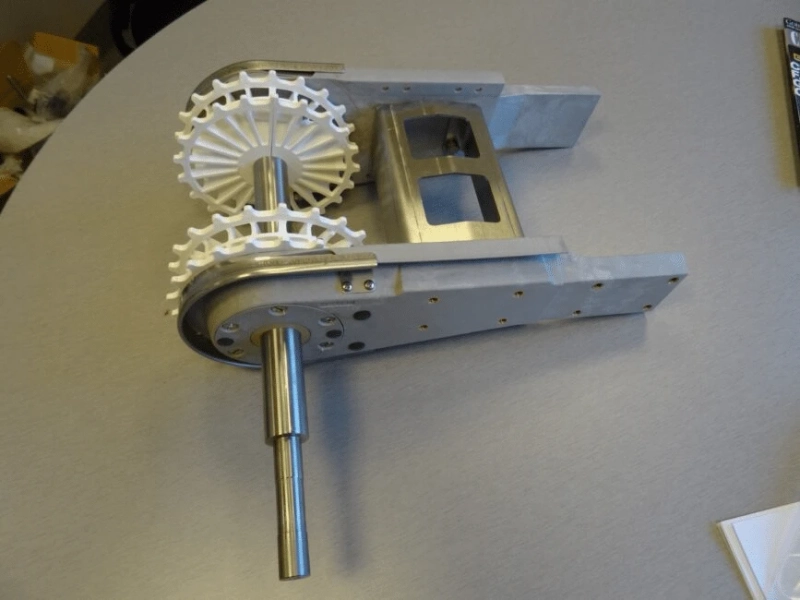Most people don’t think twice about the inner workings of conveyors, including some operators. As long as the conveyor functions, that’s all that matters. Right? Well, no, that’s wrong. Especially for the individuals who are in charge of cleaning and maintaining these systems, everything’s important, including all the different conveyor components.
There are only two basic types of conveyors that exist: powered and gravity. However, there are many brands and types under each category.
Overall, the list of conveyor system parts is quite extensive. This type of material handling system has numerous belt conveyor parts and belt conveyor components. Even so, to keep a conveyor operating, those in charge of maintenance focus the most on the three main parts: pulley, drive unit, and belt support.
Benefits of Keeping Conveyor Parts in Stock
To ensure your company’s conveyors operate as needed, you don’t want to take the risk of not having spare conveyor parts and conveyor accessories in your inventory. All it would take is for one of the many small conveyor system components to break for operations to completely stop. Not only would that halt production, but you would have operators standing by with nothing to do.
Even worse, not keeping spare parts on hand, especially conveyor belt components, would make it difficult to meet your customers’ delivery requirements. When they don’t receive items on time, some might choose a different material handling company.
Frequent machine breakdowns could ruin a company’s reputation. While a small spare part may seem insignificant, it could mean the difference between success and failure.
The following are some of the key reasons you want to have a healthy inventory of conveyor system components and parts at all times:
Greater Efficiency
Maintaining an inventory of all the different parts and components required to keep your conveyor system operating leads to greater efficiency. If something breaks, having spares will get operations up and running much faster than if you had to order the parts. This is especially critical for larger items such as belt conveyor components.
Cost Savings
When initially stocking your inventory, you’ll need to make a large upfront investment. While that might feel overwhelming, it’s nothing compared to how you would feel if something breaks down and you don’t have the necessary conveyor parts on hand.
As an example, say one of the primary conveyor belt components wears down and snaps. Unfortunately, you didn’t keep any spares. As a result, you have no choice but to order the part and then wait for it to arrive, which could take several days to weeks. During that time, your operations come to a standstill.
Just imagine what that would do to your company’s bottom line. Every second your conveyor systems are non-operational, your business loses money. Beyond the financial impact of not having spare conveyor system parts in stock, you risk losing customers. It took a lot of time and effort to build those relationships. So, the last thing you want is to create a scenario that could permanently damage them.
Correct Repairs
While it might sound odd, some companies use the wrong conveyor system components as a temporary fix to get things moving again. While that might seem like an innovative solution, it’s not. Even replacing a broken screw with one not intended for the same purpose could create a host of problems, including equipment shutdown. With a good spare part inventory, you’ll always have the appropriate conveyor parts and conveyor accessories whenever you need them.
Unnecessary Shipping Expenses
Shipping rates continue to climb. To avoid this added expense, you don’t want to have anything shipped to your company overnight or as priority mail. If you don’t keep all the necessary conveyor system components on hand, you’ll end up paying a small fortune to get the items you need. Considering that most components, such as conveyor belt parts, are critical, you would need them delivered via the fastest method possible.
Helpful Tips
To avoid the risks associated with an unhealthy inventory, start by learning as much as you can about the specific conveyor system your company uses. That will help you identify the types of conveyor system parts and components that wear down and break the most often. Those are the items you always want to have on hand.
You can also talk to the company that you purchased the conveyor system from to determine what parts and components you need and how many. When buying from a reputable source, a representative will have all the information you need.
Summing Things Up
You’re better off keeping spare conveyor belt components and other parts readily available than to face shutting down your entire operations. As competition among material and product handling companies intensifies, you need to be on your “A-game” at all times.
Maintaining an inventory of spare belt conveyor parts and belt conveyor components will also affect the operators who run the systems. Rather than feel frustrated over and over again due to not having the items needed, they’ll feel motivated when they can perform their job.
For all the different conveyor system parts you need, contact a conveyor company. They’ll help you find the appropriate parts and components to stock your inventory.



